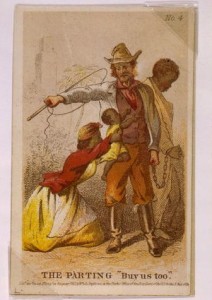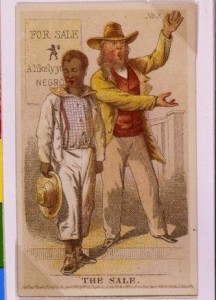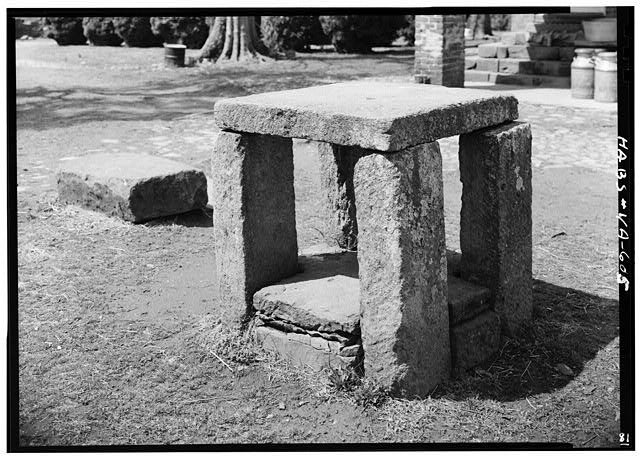Inflation in the Confederacy wasn’t just wreaking havoc on prices for basic needs like flour. Slave prices were at their highest ever in Richmond. From the Richmond Daily Dispatch October 24, 1863:
High prices.
–The highest prices yet paid for negroes (farm hands) were obtained yesterday at the sale rooms of Messrs. Dickinson & Co, where five were knocked out at the following prices: $3,950, $3,850, $3,790, $3,665, and $3,485–the five bringing an aggregate of $18,770. The last sold was a mechanic as well as farm hand.
_____________________________
The slave images are from a collection of cards painted by Henry Louis Stephens and published in Philadelphia in 1863.
Encyclopedia Virginia says that higher slave prices increased the chances slave families would be separated:
Finally, the wartime increase in slave hiring brought numerous disruptions to slaves’ family lives. Enslaved men impressed to work on fortifications or hired to Confederate officers and industrial employers usually left their wives and children behind, placing a heavier work burden on enslaved women. Climbing prices for slaves in both the hiring and long-distance sale markets increased the likelihood that families would be separated. Other aspects of the war brought additional disruptions of family life. In particular, slaves forced to abandon their homes with refugee masters and mistresses left behind friends and relatives who lived on neighboring plantations.



